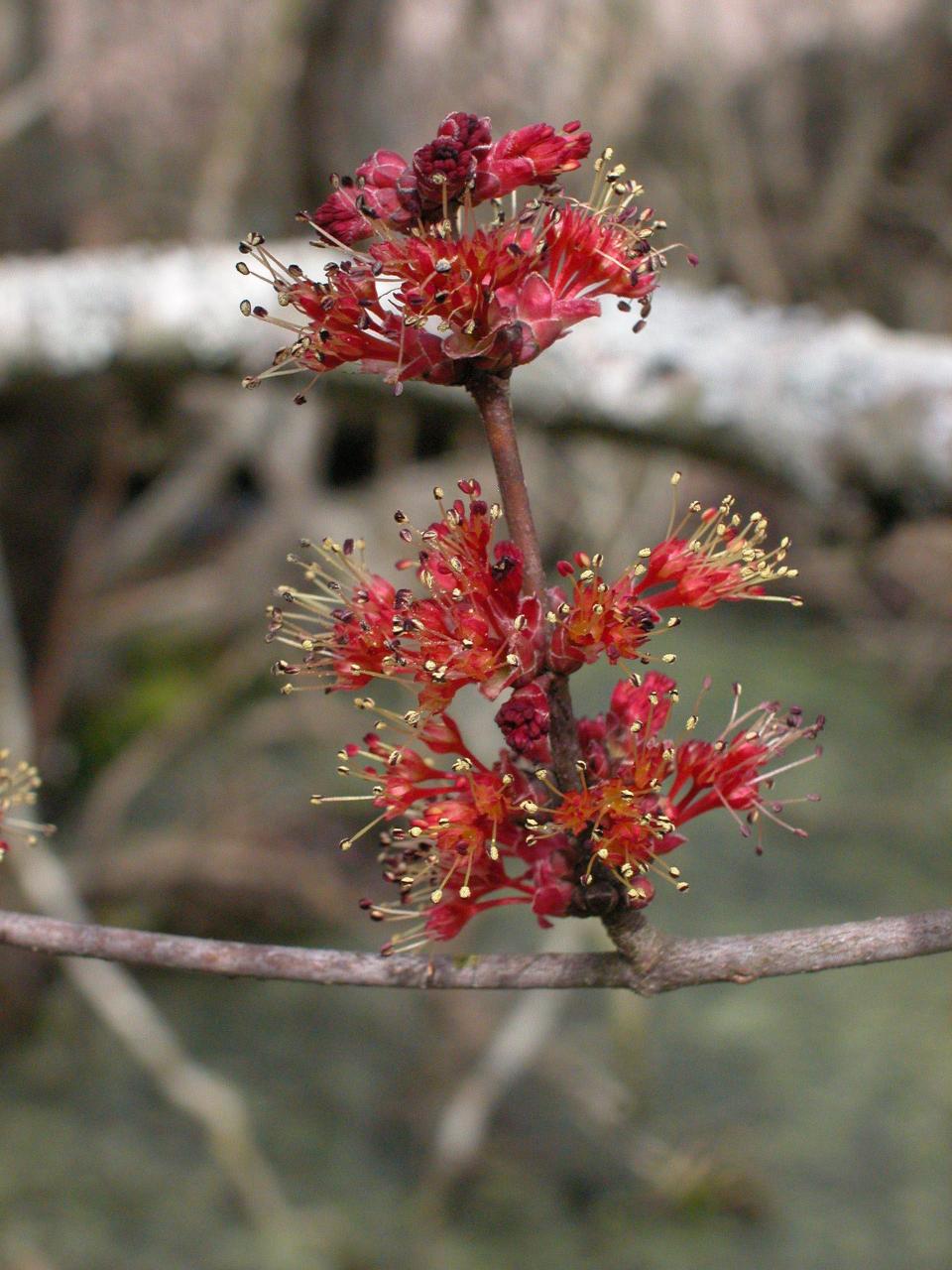This native species glows red in spring and fall
"In an early spring we see the appearing buds;Which to prove fruit, hope gives not so much warrant as despairThat frosts will bite them."King Henry IV, Part 2: I: 3.
I'm just like Lord Bardolph, who was afraid that just as soon as the new buds start to show, a cold spell will come along and "bite" them.
The season now is hard to figure: is it late winter or early spring? Lots of folks, especially those of us with a bad case of cabin-fever, want to lean toward the latter, and surely there are already plenty of buds — and opening flowers — visible on our landscape.
It has been a relatively mild winter here in the South, at least where I live, certainly not an “old-time” winter like many people have had. And there are a lot of newly-appearing floral delights.

These red flowers are produced by the millions, on trees. It is a native species that is common all over the southern states, and indeed, it gets all the way up through New England, to southern Canada.
This tree (Red maple, Acer rubrum) is as much at home on high ground as it is in our deepest swamps. It doesn't mind having its feet wet, and the base of the trunk will commonly be submerged during spring floods, with no harm done.
Otherwise, it is common as well in our sandhills and mountain forests. This species is probably much more common these days than it was before Europeans showed up. In fact, ecologists wonder that maybe its success, over that 300 years or so, is a result of forest disturbance and a general lack of fire.
And, it may be that the overwhelming success of this native species might not be good news for other natives, including oaks and hickories. Those of you with horses need to know that the foliage can be toxic if eaten, especially if the leaves have been damaged. It might be a good idea to make sure this tree is not overhanging your pasture fence.
The bark is beautiful, gray and smooth, although on big individuals the bark becomes fissured and split. The leaves are roughly three-lobed, somewhat resembling what you'll see on the flag of Canada. As they unfold, the leaves may be bright red, eventually greening up on the top, and with a much paler lower surface.
In the fall, the leaves turn red again: it's one of our nicest species for autumn color. Additionally, this species, which is related to the famous sugar maple, has itself been used as a source of syrup.
Back to the flowers, though. An individual tree will generally have only male flowers, as in this photo, producing plenty of pollen, or female flowers, which eventually produce red, winged, one-seeded fruits. Whether male or female, the individual flowers tend to be fairly inconspicuous. But when massed together, the trees take on a pink or red hue, which is hard to miss.
This floral display is especially prominent in swampy habitats, easy to notice if you are cruising down the road at 55 mph: that's what that reddish-pink haze is in the woods. (PS. Watch your speedometer.)
John Nelson is the retired curator of the Herbarium at the University of South Carolina, in the Department of Biological Sciences. As a public service, the Herbarium offers free plant identifications. For more information, call 803-777-8175 or email johnbnelson@sc.rr.com.
This article originally appeared on Tallahassee Democrat: Thriving red maple displays brilliant color in spring, fall

